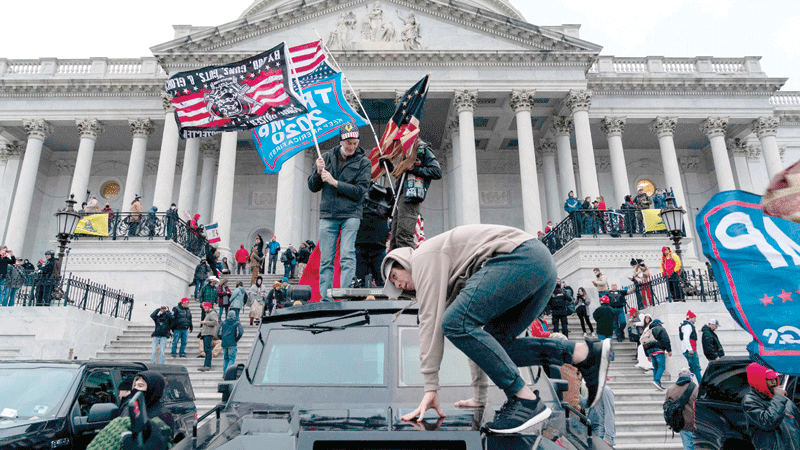

Joseph Tanfani, John Shiffman, Brad Heath, Mark Hosenball -
The bloody chaos inside the US Capitol on Wednesday came after the police force that protects the legislative complex was overrun by a mob of Trump supporters in what law enforcement officials called a catastrophic failure to prepare.
The siege of the Capitol, home to both the US Senate and the House of Representatives, represents one of the gravest security lapses in recent US history, current and former law enforcement officials said, turning one of the most recognisable symbols of American power into a locus of political violence.
While events such as a presidential inauguration involve detailed security plans by numerous security agencies, far less planning went into protecting the joint session of Congress that convened on Wednesday to ratify the results of the 2020 presidential election, the officials said. That lapse came despite glaring warning signs of potential violence by hardline supporters of President Donald Trump, who are inflamed by Trump’s baseless claims of a stolen election and hope to block the inauguration of President-elect Joe Biden.
And security initially was handled almost entirely alone by the US Capitol Police, a 2,000-member force under the control of Congress and dedicated to protecting the 126-acre Capitol Grounds. For reasons that remained unclear as of Thursday, other arms of the US federal government’s vast security apparatus did not arrive in force for hours as rioters besieged the seat of Congress. The Capitol is a short walk from where Trump in a speech railed against the election just before the riot began, calling the vote an “egregious assault on our democracy” and urging his supporters to “walk down to the Capitol” in a “Save America March.”
The counting of the electoral votes of the presidential election by Congress, normally a formality, was preceded by weeks of threats in social media that planned pro-Trump protests could descend into violence. Despite those rumblings of danger, the Capitol Police force did not request advance help to secure the building from other federal agencies such as the Department of Homeland Security, according to one senior official. And National Guard reinforcements, summoned by the city’s mayor, were not mobilised until more than an hour after protesters had first breached the barricades.
In stark contrast, those agencies were aggressively deployed by the Trump administration during last summer’s police brutality protests in Washington and elsewhere in the United States.
The Capitol Police did not respond to requests for comment.
The force’s officers are trained to keep protesters off the Capitol’s marble outdoor steps, to protect the complex like a citadel. But there are so many windows and doors in the 19th-century complex that it is difficult to defend them all, said Terrance Gainer, who served as Capitol Police chief and later as the US Senate’s Sergeant at Arms, its chief law enforcement officer. — Reuters
Oman Observer is now on the WhatsApp channel. Click here



